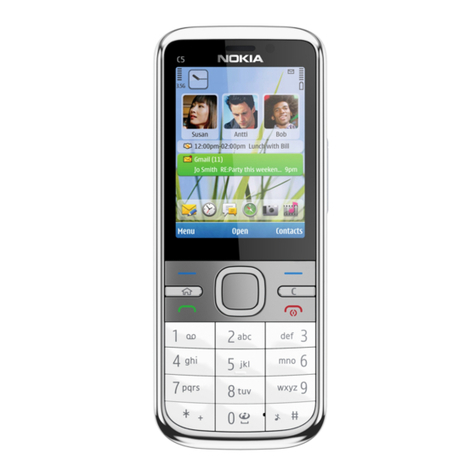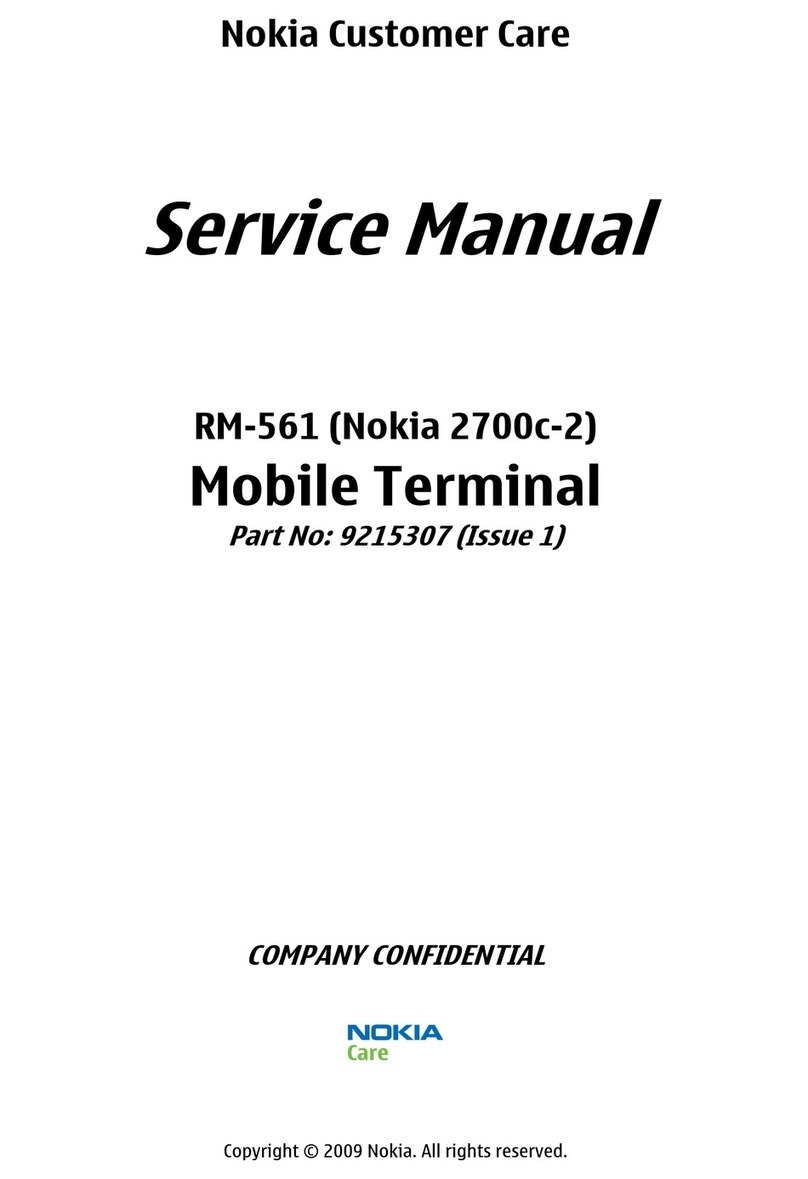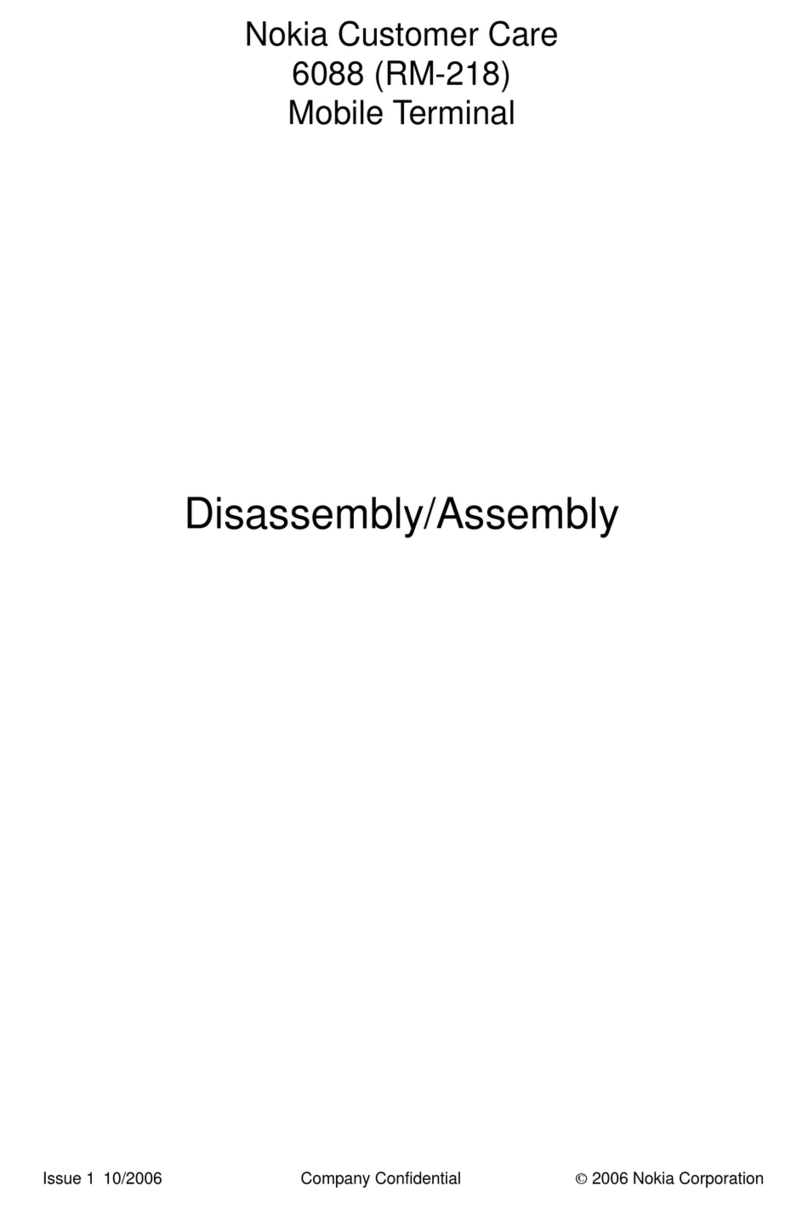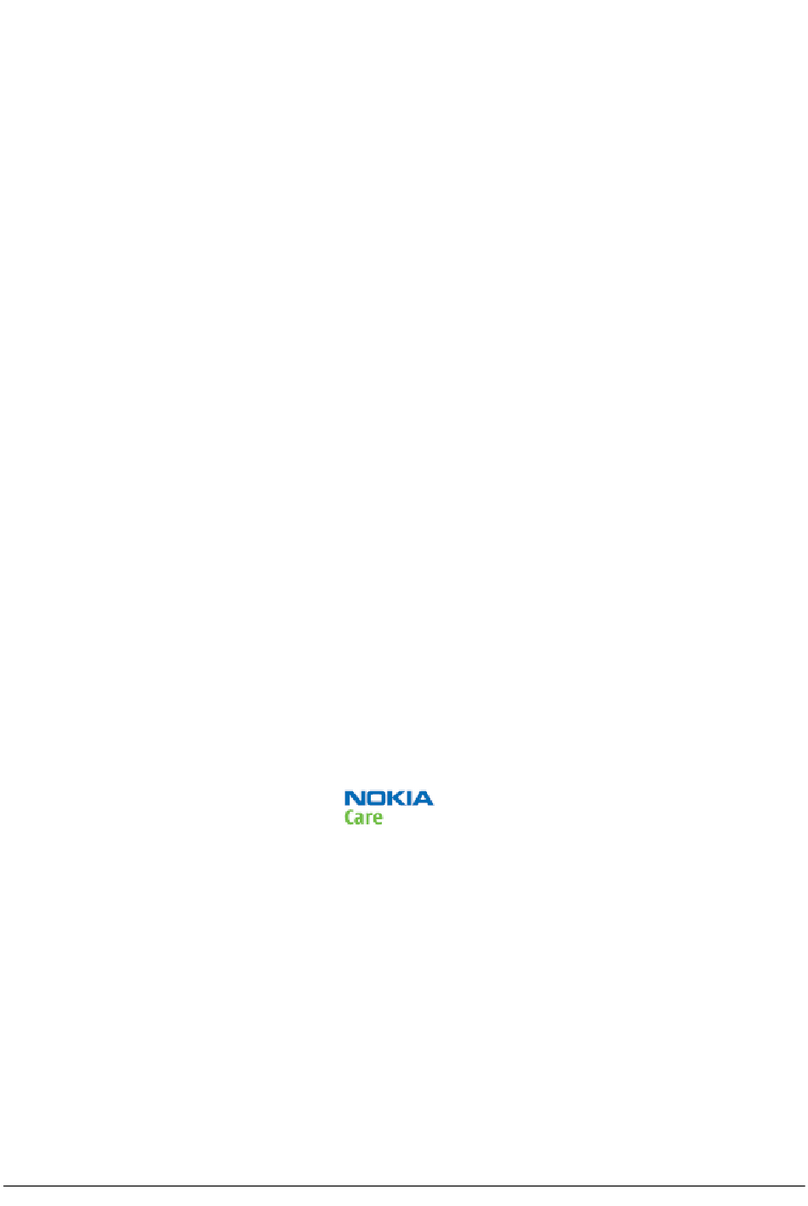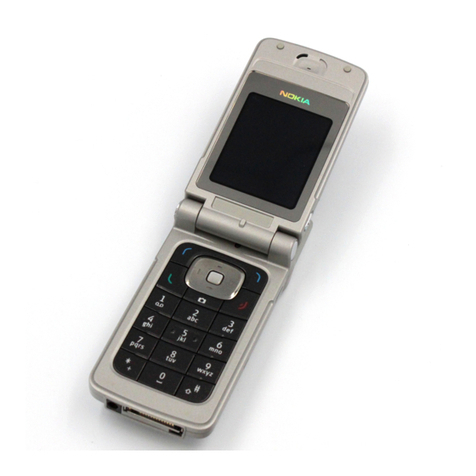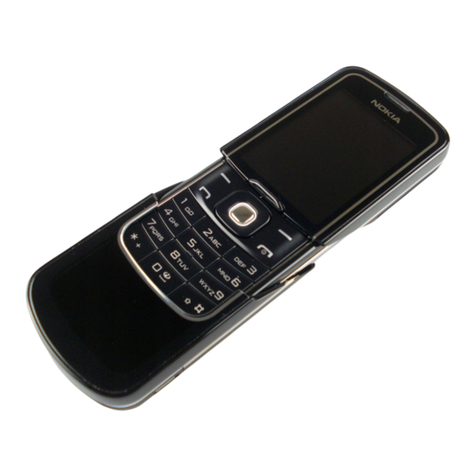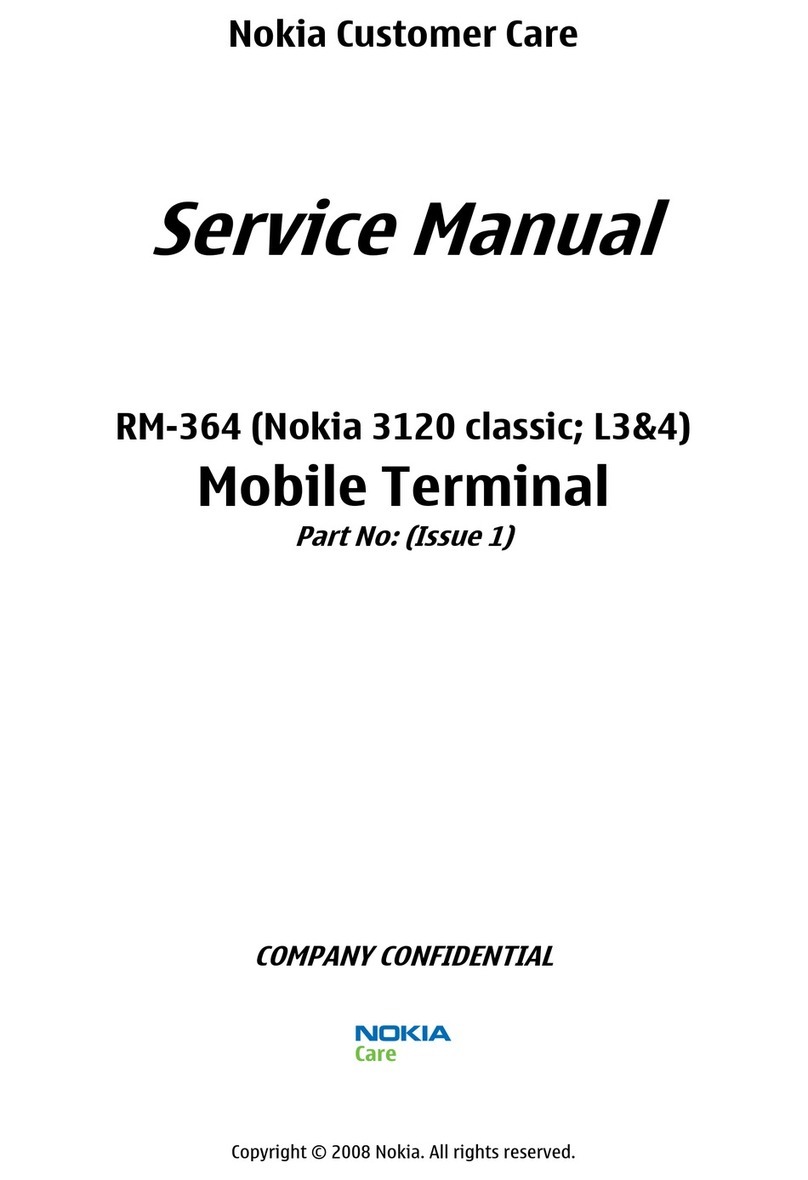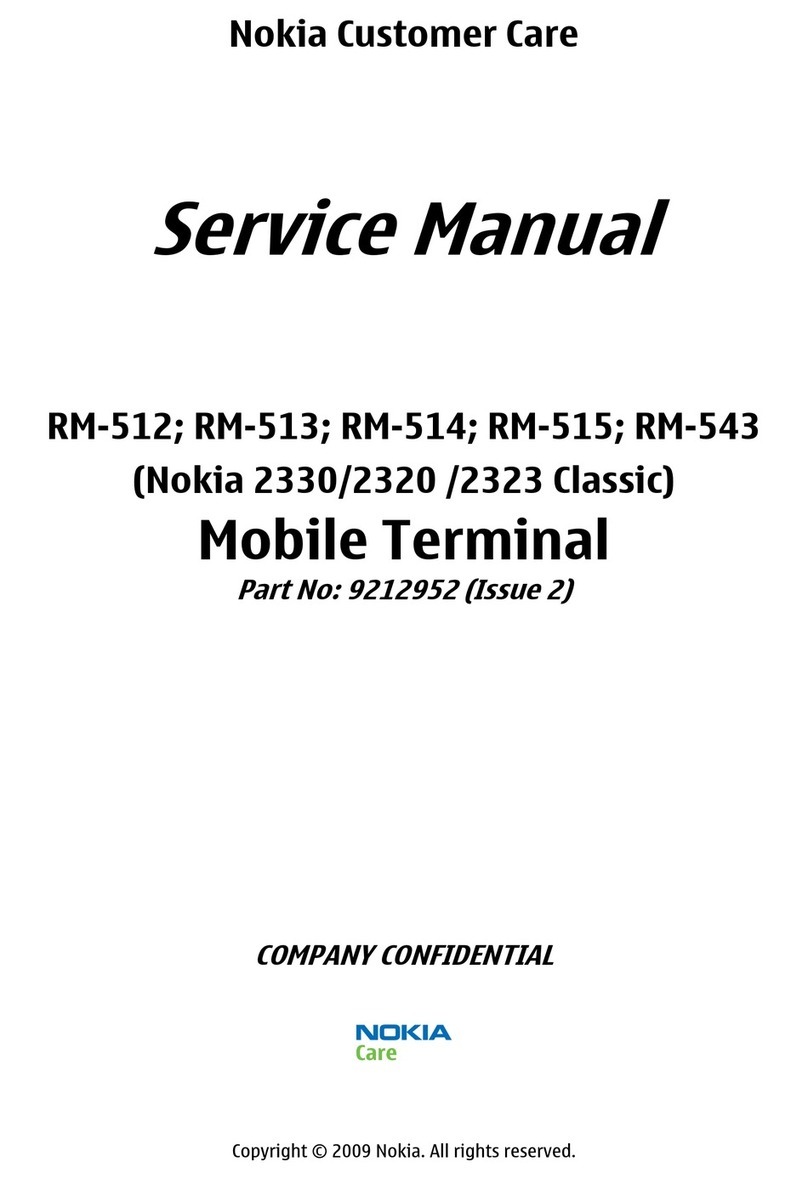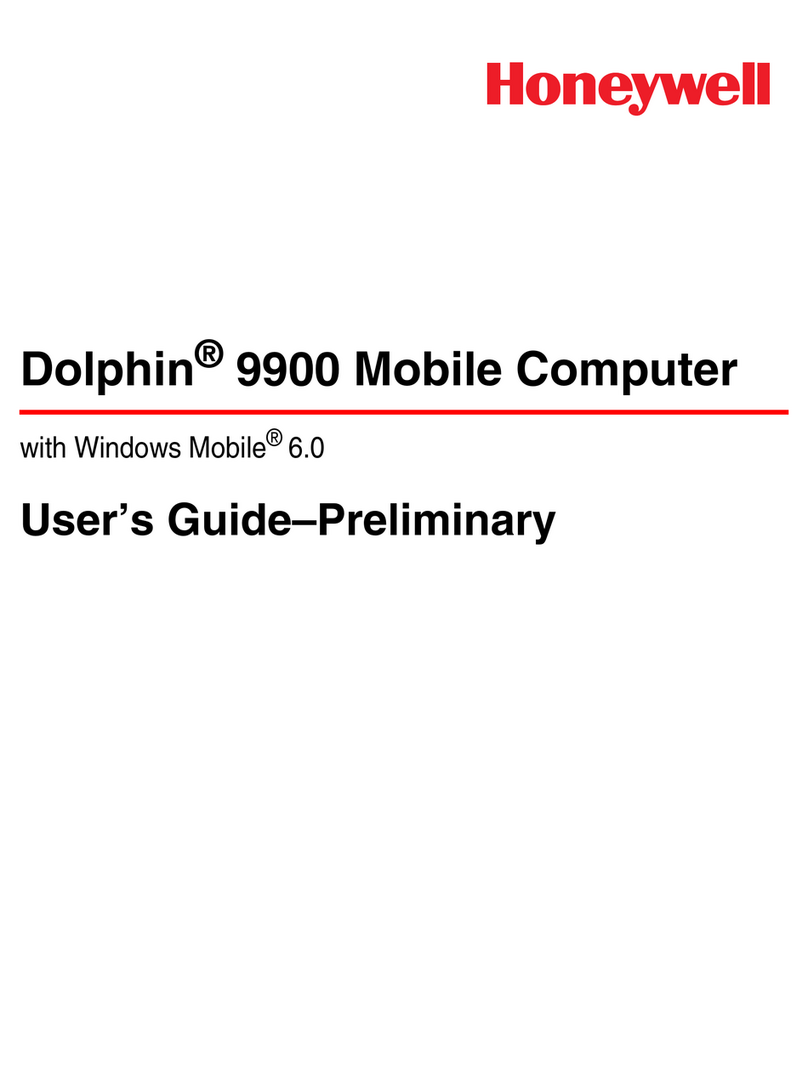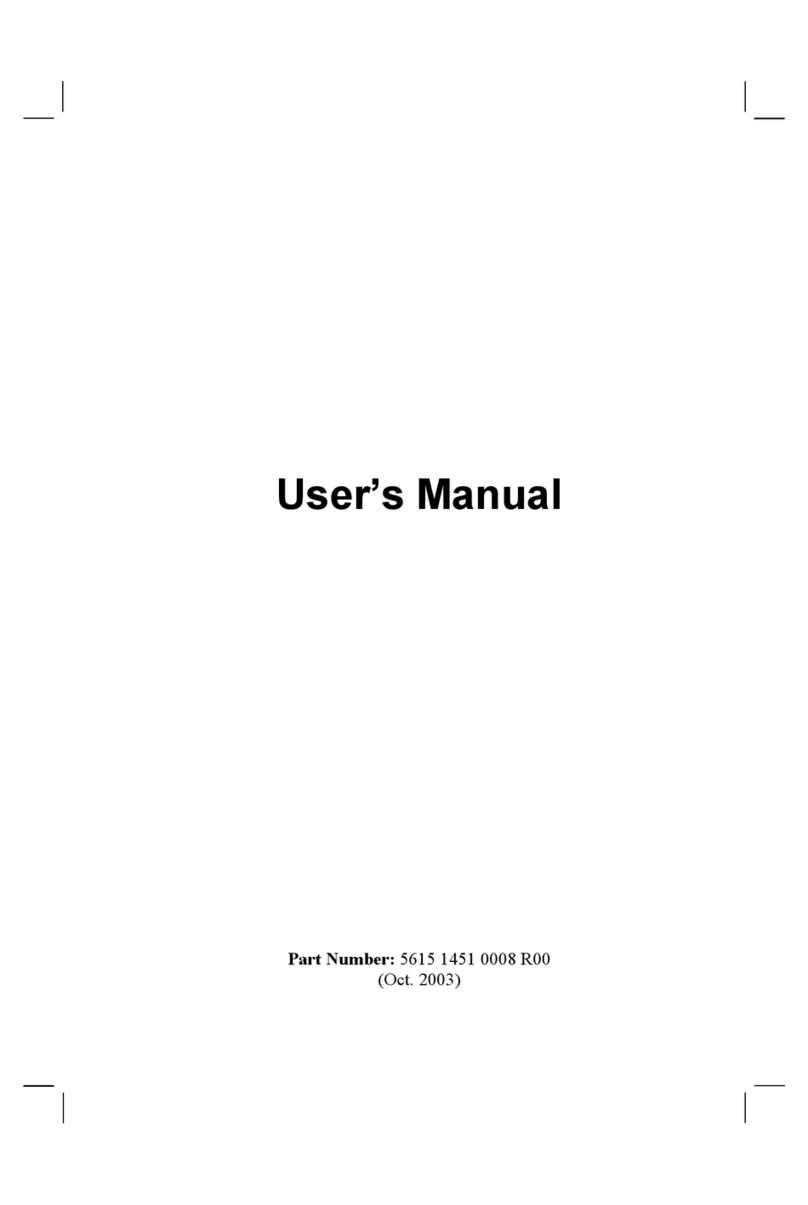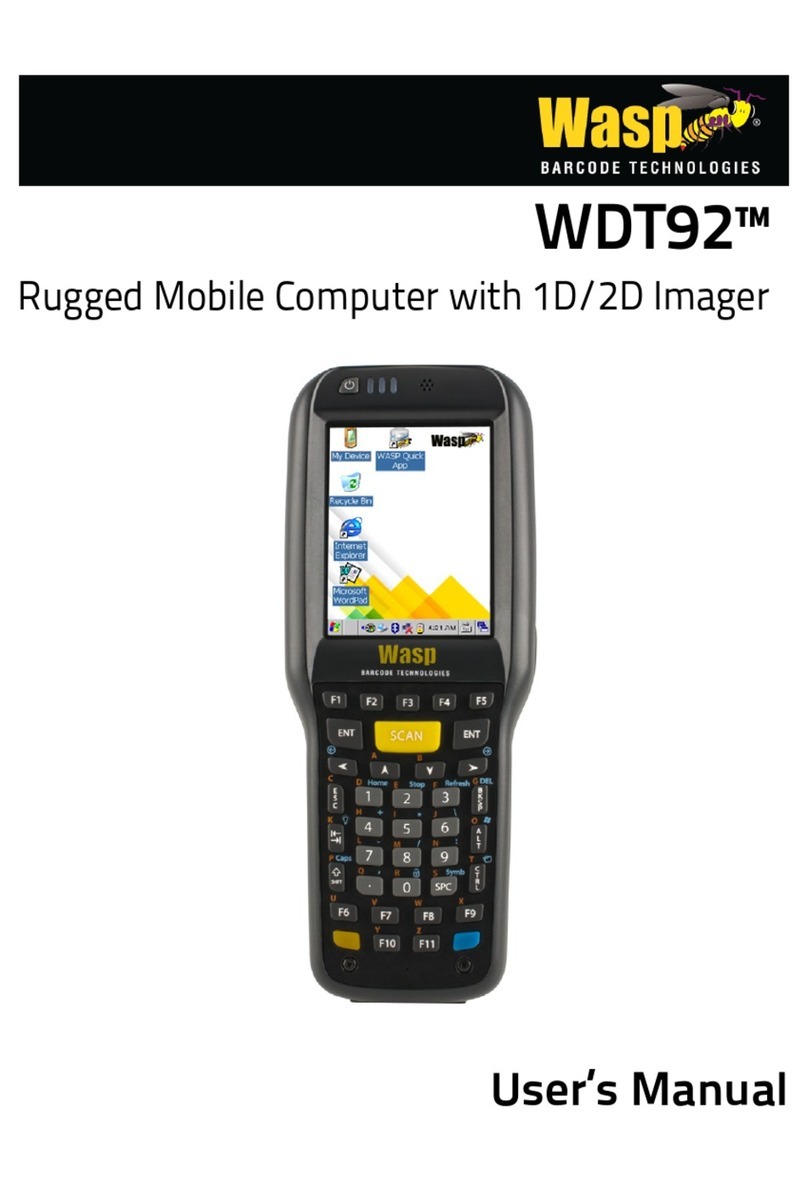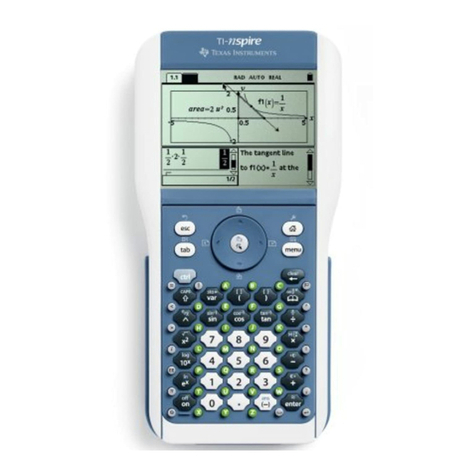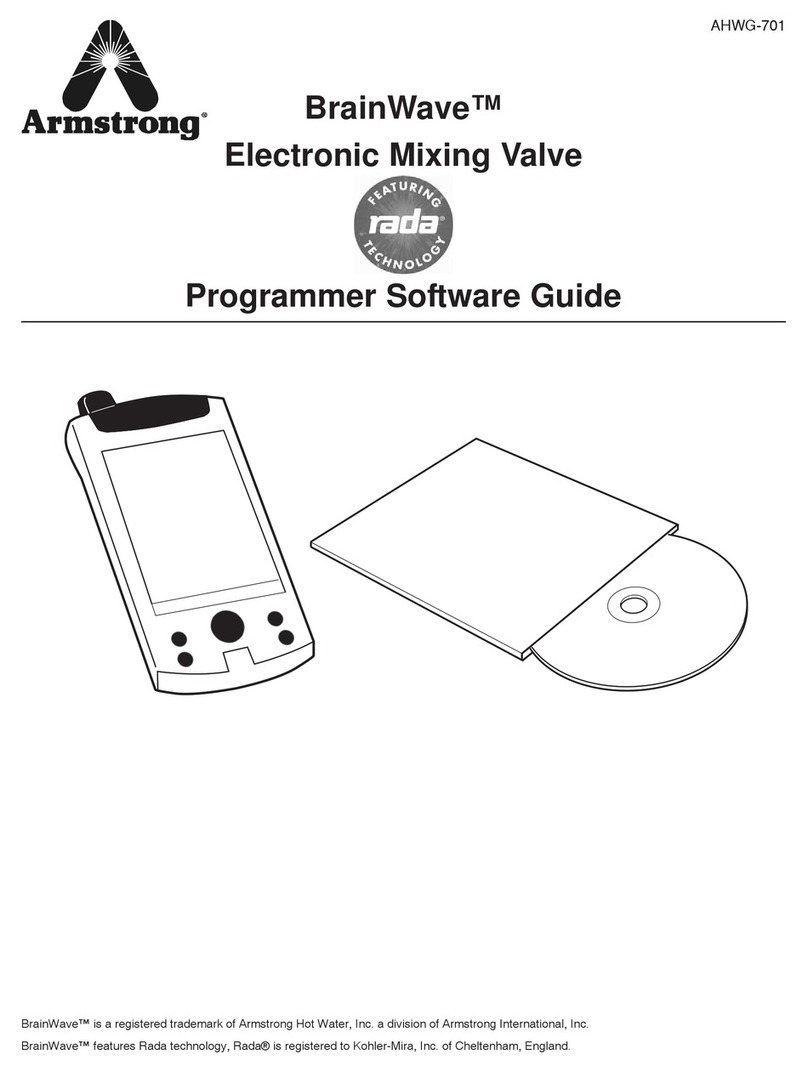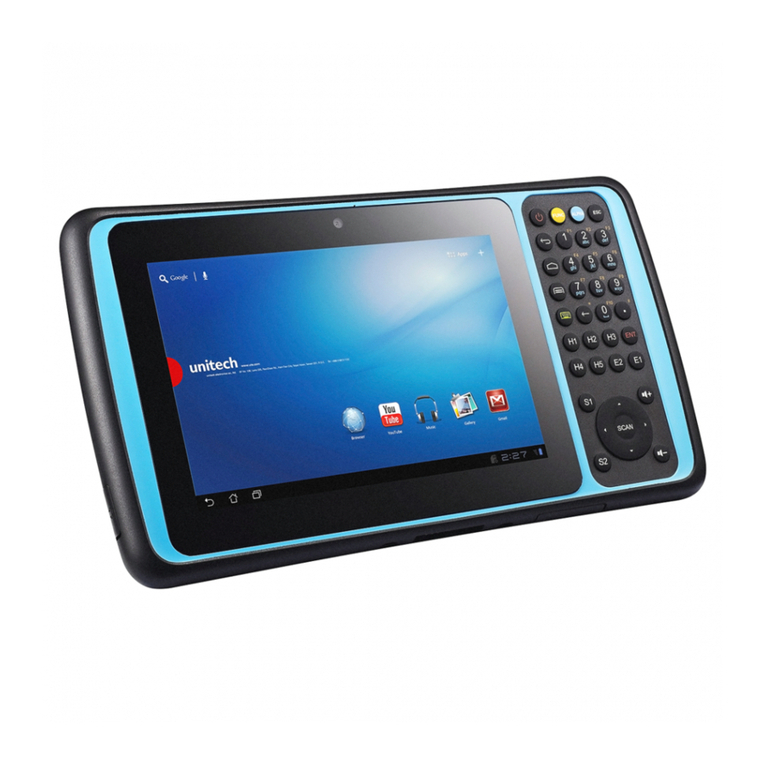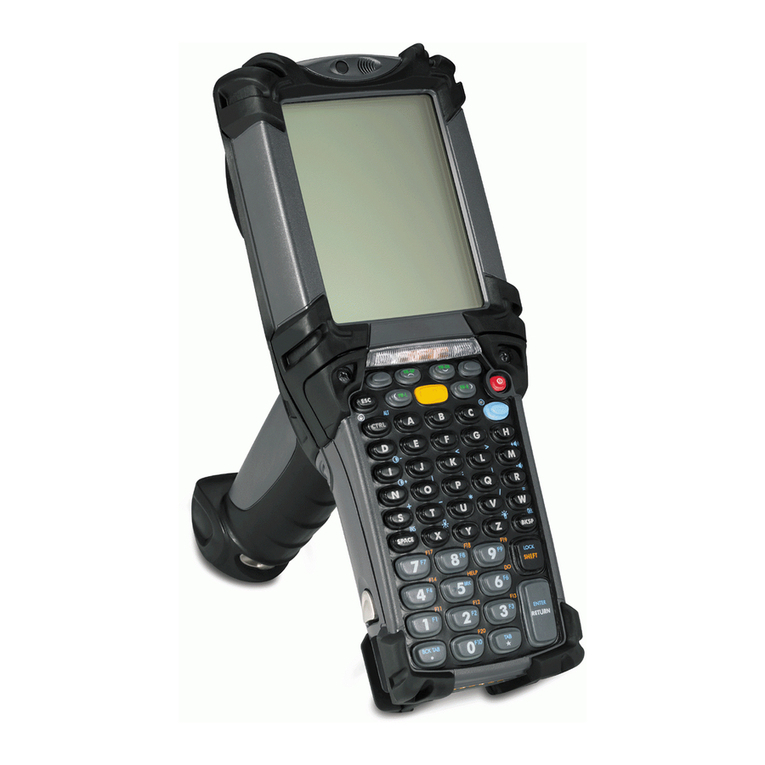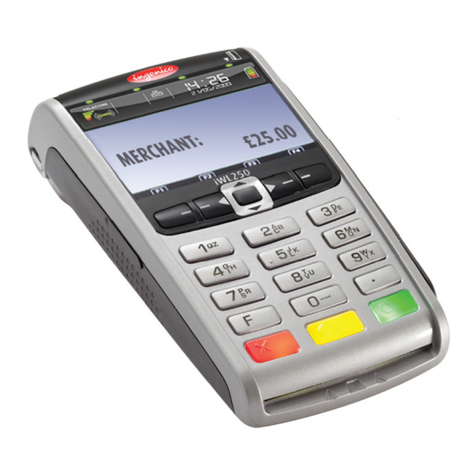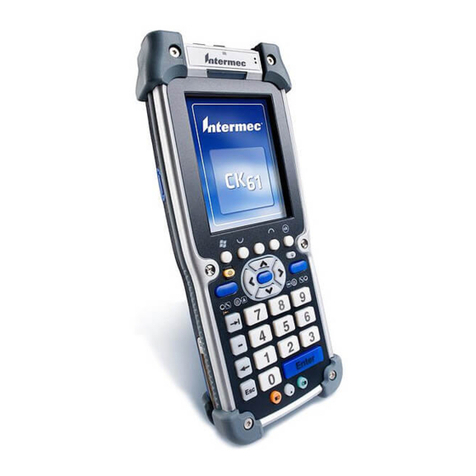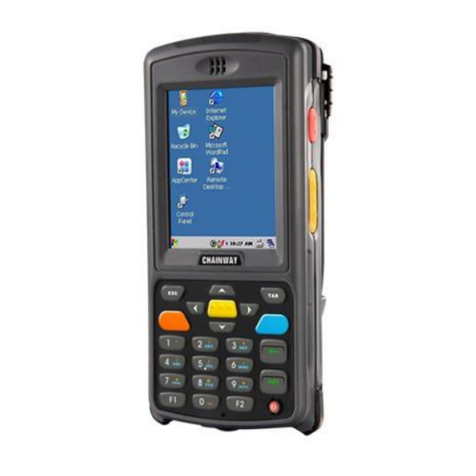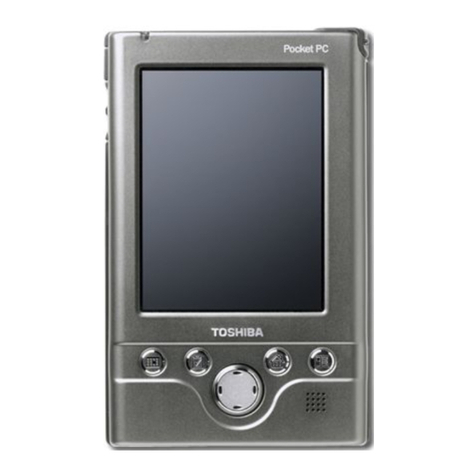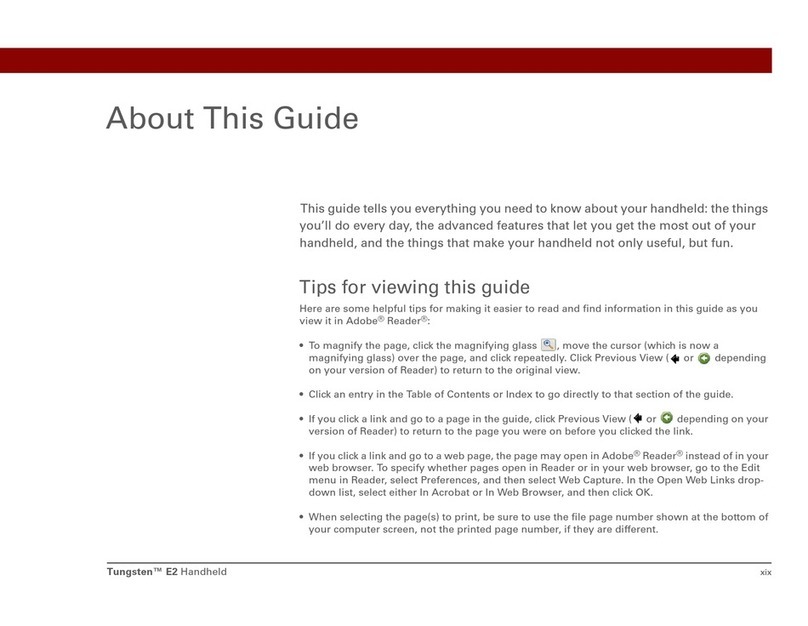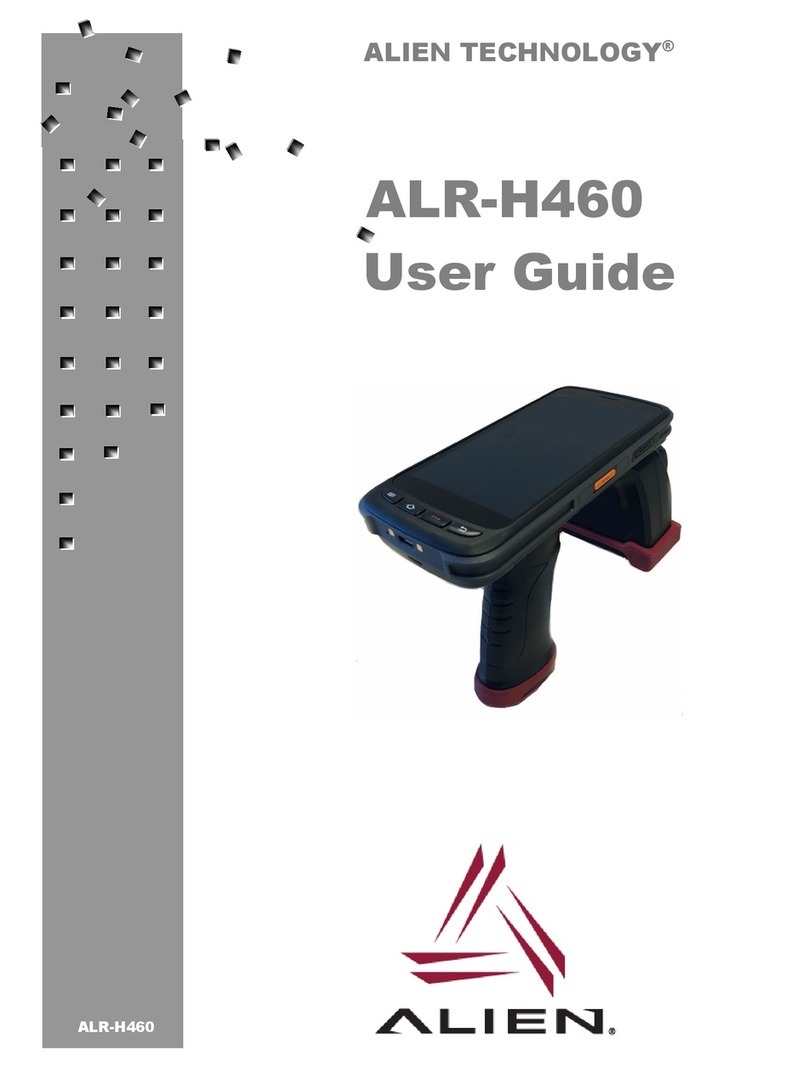
6255/6255i6256/6256i (RM-19)
Baseband Description and Troubleshooting Nokia Customer Care
Page 2 ©2005 Nokia Corporation Company Confidential Issue 2 05/2005
Contents Page
Introduction ..................................................................................................................................................... 4
Power Up and Reset ....................................................................................................................................6
Power Up - Power Key............................................................................................................................. 8
Power Up - Charger Connection .......................................................................................................... 8
Power Up - RTC Alarm............................................................................................................................. 9
Power Off .......................................................................................................................................................9
Power Consumption and Operation Modes .........................................................................................9
Power-off Mode........................................................................................................................................ 9
Sleep Mode.............................................................................................................................................. 10
Active Mode ............................................................................................................................................ 10
Charging Mode....................................................................................................................................... 10
Power Distribution ....................................................................................................................................11
Clock Distribution ......................................................................................................................................13
RFClk (19.2MHz Analog)...................................................................................................................... 13
RFConvClk (19.2MHz Digital)............................................................................................................. 14
CBUSClk Interface ................................................................................................................................. 15
DBUS Clk Interface................................................................................................................................ 16
SleepCLK (Digital) .................................................................................................................................. 17
SleepCLK (Analog).................................................................................................................................. 18
Flash Programming ...................................................................................................................................18
Connections to Baseband.................................................................................................................... 18
Baseband Power Up .............................................................................................................................. 18
Flash Programming Indication........................................................................................................... 19
Flashing..................................................................................................................................................... 19
Flash Programming Error Codes ........................................................................................................ 22
Charging Operation ...................................................................................................................................24
Battery ...................................................................................................................................................... 24
Charging Circuitry ................................................................................................................................. 24
Charger Detection.................................................................................................................................. 25
Audio .............................................................................................................................................................25
Displays and Keymat ................................................................................................................................25
Main Display............................................................................................................................................ 26
Secondary Display.................................................................................................................................. 27
Keymat...................................................................................................................................................... 27
Camera .........................................................................................................................................................27
DC Measurements.................................................................................................................................. 28
AC Measurements.................................................................................................................................. 28
FM Radio ......................................................................................................................................................29
FM Radio Test ......................................................................................................................................... 29
USB Interface ..............................................................................................................................................31
Accessories ..................................................................................................................................................33
Charging................................................................................................................................................... 34
Pop-port Headset Detection............................................................................................................... 36
FBus Detection........................................................................................................................................ 36
Accessory Detection Through ACI..................................................................................................... 37
RUIM (SIM CAR) ........................................................................................................................................39
Main Display Test Points ........................................................................................................................... 40

